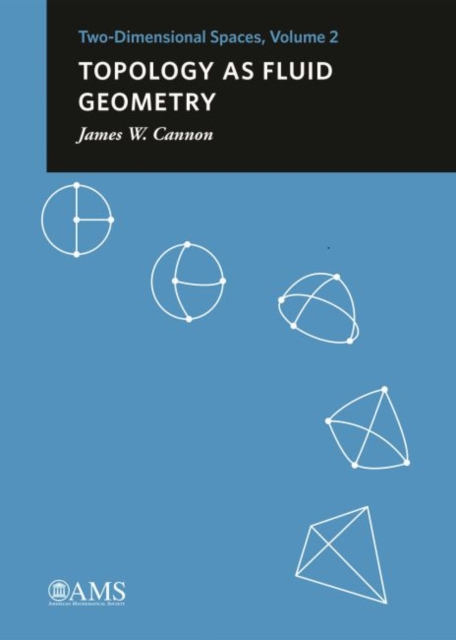
Topology as Fluid Geometry : Two-Dimensional Spaces, Volume 2 Paperback / softback
by James W. Cannon
Part of the Monograph Books series
Paperback / softback
Description
This is the second of a three volume collection devoted to the geometry, topology, and curvature of 2-dimensional spaces.
The collection provides a guided tour through a wide range of topics by one of the twentieth century's masters of geometric topology.
The books are accessible to college and graduate students and provide perspective and insight to mathematicians at all levels who are interested in geometry and topology. The second volume deals with the topology of 2-dimensional spaces.
The attempts encountered in Volume 1 to understand length and area in the plane lead to examples most easily described by the methods of topology (fluid geometry): finite curves of infinite length, 1-dimensional curves of positive area, space-filling curves (Peano curves), 0-dimensional subsets of the plane through which no straight path can pass (Cantor sets), etc.
Volume 2 describes such sets. All of the standard topological results about 2-dimensional spaces are then proved, such as the Fundamental Theorem of Algebra (two proofs), the No Retraction Theorem, the Brouwer Fixed Point Theorem, the Jordan Curve Theorem, the Open Mapping Theorem, the Riemann-Hurwitz Theorem, and the Classification Theorem for Compact 2-manifolds.
Volume 2 also includes a number of theorems usually assumed without proof since their proofs are not readily available, for example, the Zippin Characterization Theorem for 2-dimensional spaces that are locally Euclidean, the Schoenflies Theorem characterizing the disk, the Triangulation Theorem for 2-manifolds, and the R.
L. Moore's Decomposition Theorem so useful in understanding fractal sets.
Information
-
Available to Order - This title is available to order, with delivery expected within 2 weeks
- Format:Paperback / softback
- Pages:165 pages
- Publisher:American Mathematical Society
- Publication Date:28/02/2018
- Category:
- ISBN:9781470437152
Information
-
Available to Order - This title is available to order, with delivery expected within 2 weeks
- Format:Paperback / softback
- Pages:165 pages
- Publisher:American Mathematical Society
- Publication Date:28/02/2018
- Category:
- ISBN:9781470437152










